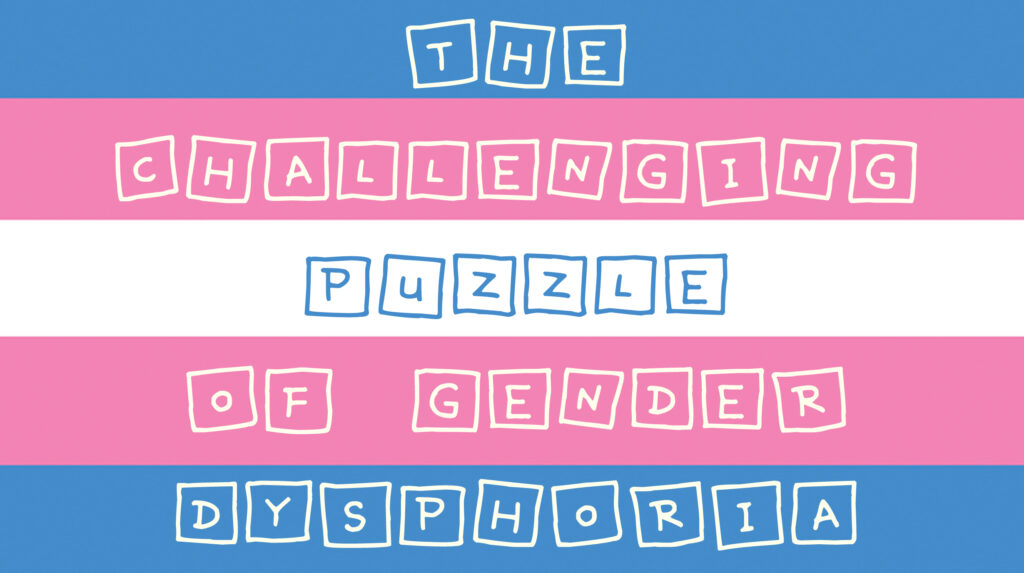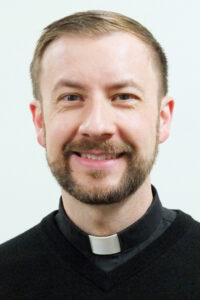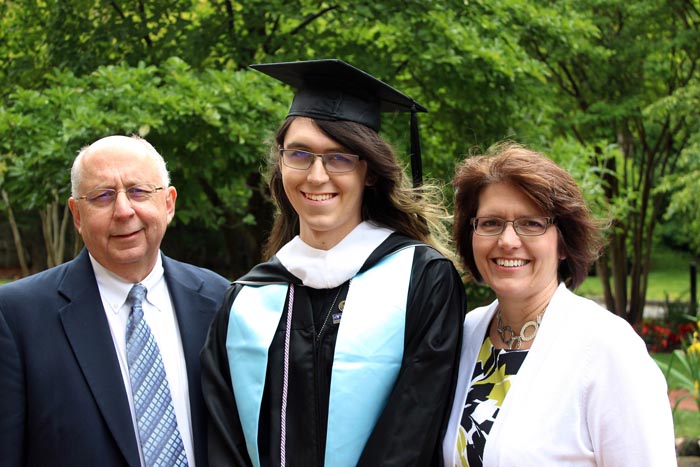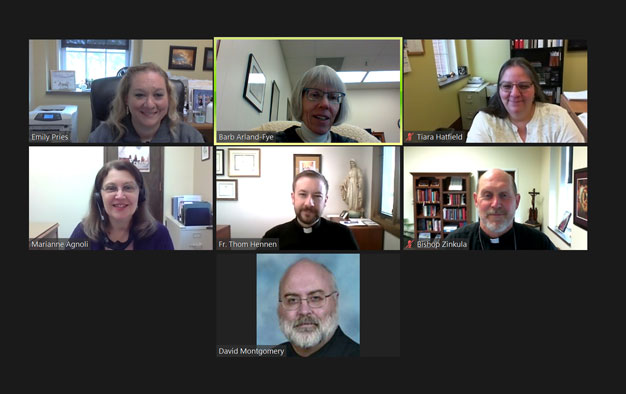
By Father Thom Hennen
For The Catholic Messenger
When I was vocation director for the Diocese of Davenport, I used to do an activity with young people in schools and parish faith formation programs. I would divide them into small groups and ask for one volunteer in each group to be blindfolded. The others assisted that person to assemble a simple puzzle. Those assisting could not touch the blindfolded person’s hands or maneuver the pieces in any way. They could only hand the pieces to the blindfolded person and give them directions. Just to make things extra interesting, I gave them a time limit and left out a piece.
When they had completed the activity, I used this little exercise as a way to explain discernment. There are many things we cannot see. There are many voices in the world. We need to listen attentively for the voice of God and rely on the help and good advice of people we trust. If we are not careful, we may be missing something essential. The full picture of our life and calling may only be revealed when the “puzzle” is finished. All analogies limp, of course, but this was a useful way to begin the conversation about how we discern God’s call.
This image is what comes to mind as I think of the work of the diocesan committee exploring a pastoral response to gender dysphoria, transgender persons and their families.

We have been given pieces of a very complicated puzzle. First, there is the data of the body itself. Then, there is what we know (and are still learning) about the human mind and the nexus between body and mind. There are numerous social and cultural influences and considerations. There is what we believe about the nature and fundamental dignity of every human person from Scripture and our tradition. Finally, there are the actual experiences of those dealing with gender dysphoria, however few they may be relative to the general population. How do these pieces all fit together to reveal an integral pastoral response by the Church to this issue?
Many voices are giving us advice. All are sincere and most are well-meaning, but often they are giving us confusing or even contradictory instructions. There are some for whom even taking up the question is seen as bending to the culture. There are others for whom anything short of the unquestioning and blanket acceptance of certain premises, language and therapeutic options is seen as regressive and transphobic. What is the Church to do?
Let’s return for a moment to the puzzle activity. The groups that had the greatest success were able to fit into place the border pieces first and then fill in the middle. In the same way, with this issue we need to define the edges. There is good consensus, for example, that gender dysphoria is real, that transgender people are not “pretending.” Individuals do not choose to be transgender, at least in terms of the experience of this deep disconnect between their bodies and their perception of themselves. This incongruence often persists from a very young age and is part of the middle of the puzzle we are still working on, and not just in the Church. In either case, telling people who experience gender dysphoria that they don’t exist is not helpful.
Another “border” is that whatever pastoral response we make and any guidelines we may eventually develop must treat people with the dignity and respect they deserve as human beings made in the image and likeness of God. That is a hard edge, a non-negotiable. The question has never been whether or not we are called to love those who experience gender dysphoria, but how to love them in the most authentic way possible. This is one of the few points of absolute agreement from both “sides” of this issue.
In the face of this challenging puzzle, we do have other options. We could abandon the puzzle altogether, but when lives and souls are on the line, how can we? We could simply throw away the pieces we’re having trouble fitting. Or we can try to mash pieces into place, even where they don’t fit, just to be done with it, but this is not really finishing the puzzle and we may regret the outcomes.
The fact is, we do not have a perfect or near complete answer to this question, not in our diocese and not in the Church as a whole. We can only patiently, calmly try to fit one piece at a time, listening to the best advice available from sources we trust and to the experiences of those who experience gender dysphoria and their families. Please pray for the work of this committee and for the guidance of the Holy Spirit.
(Father Hennen serves as vicar general for the Diocese of Davenport and pastor of Sacred Heart Cathedral in Davenport. He has an STL in moral theology and is completing studies for a Doctor of Ministry with a focus on pastoral leadership.)










